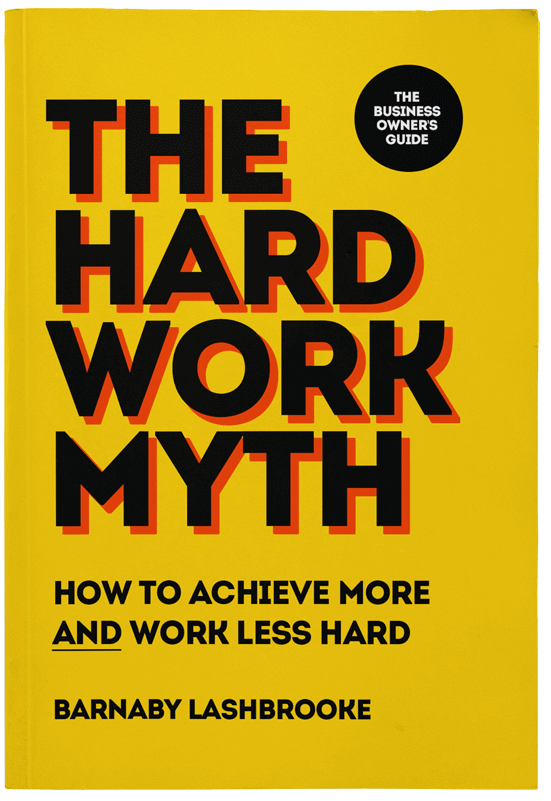All entrepreneurs want more hours in the day, and there are myriad time management methods promising revolutionary results. But some have stood the test of time, because those who’ve tried them say they genuinely work wonders for doing laser-focused, deep work in less time.
While there are some incoming productivity blockers we cannot control, we can control how we deal with them, and how we protect and manage the limited hours we have in our working week.
Employees say they spend only 43% of their day on their primary job duties. Productivity blockers include pointless meetings, poor work prioritization and a lack of standard processes for workflow
|
The pursuit of perfect productivity is appealing to anyone with a lot of work and little time, and the ideal time management technique for you is just waiting to be found. Could it be in this article? Here, we round up six of the most famous time management techniques and productivity methods that many entrepreneurs swear by. Try them all, and see what sticks.
Eisenhower Matrix
|
Pomodoro Technique
|
Pareto Principle / 80/20 Rule
|
S.M.A.R.T Goals
|
Kanban
|
Flowtime
|
1. Eisenhower Matrix
In a 1954 address, then-U.S. President Dwight D. Eisenhower quoted these words which he said were “a dilemma of modern man”: “I have two kinds of problems, the urgent and the important. The urgent are not important, and the important are never urgent.”
Thus, Eisenhower is credited with the creation of a simple four-square grid, said to have improved his efficiency. Called the Eisenhower Matrix – or sometimes the Urgent Important Matrix – it involves taking every item on your to-do list and plotting each task onto a grid, to help a busy person decide what to tackle first, what to delegate and what not to waste time on.
These are the rules:
Urgent and important: Do it yourself, and do it right now
Important, not urgent: Do it yourself, but schedule it for later
Urgent, not important: Delegate it to someone else
Not urgent and not important: Eliminate it
Why does it work?
The reason this presidential productivity method is so useful is that urgent tasks can quite easily push the most important ones to the bottom of the pile.
Chopping up a to-do list, applying a liberal dose of ruthlessness, and putting it through this stress test before taking any action is a good way to make sure no time is wasted on tasks that are a) irrelevant or b) something that someone else could be doing (and possibly do better than you).
We are naturally inclined to move on to the urgent tasks first, before tackling the quick and easy ‘bits’ that offer small bursts of satisfaction with every strike-through. But this approach distracts us from the big, important, and often complex, stuff.
Should you try it?
If you are someone who struggles with procrastination, and who finds themself replacing important projects with small, easy-win tasks then this could be the ideal method for you. However, it can be hard to identify what tasks are important – this is wide open to interpretation. As a rule of thumb, entrepreneurs should only be working on tasks that no one else can do for them, and that directly contribute to their company’s short or long-term goals.
If you could remove just one hour of low-value tasks every working day for a year, you’d gain 236 hours, equivalent to 29.5 eight-hour working days that could be spent growing your business.
|
2. Pomodoro Technique
While studying at university in the late 80s, Francisco Cirillo was looking for ways to focus and get his work done without giving in to distractions. Like many people struggling to be productive, he turned to his kitchen, but instead of a snack he grabbed a tomato-shaped timer and set it to 25 minutes.
That was the start of the Pomodoro Technique, which comes from the Italian word for tomato. It’s all about breaking your work into short stints with breaks in between.
These are the rules:
- Decide what job you want to be done.
- Set your timer, traditionally to 25 minutes (but you can mix it up).
- Get your head down and don’t break from work until you hear the ding.
- Take a quick five-minute break and then start the process again.
- After four work sessions, take a half-hour break and then restart the whole process until your work is done.
Why does it work?
The Pomodoro Technique helps you in the war against distractions because you’re tackling one job at a time and concentrating all your efforts on it. For self-proclaimed multitaskers, taking a phone call or sitting through a video meeting while clearing their inbox is efficiency epitomized, yet scientific studies show that multitasking is, in fact, a myth. It’s actually impossible for our brains to concentrate on two things at once, so when we try to multitask we are, in fact, hopping back and forth between tasks, distracting ourselves with each switch.
One study found that, in all age groups, heavy media multitaskers exhibited lower working memory performance
|
Another thing that’s great about this method is that it comes with rest time built in. Too often, as busy people, we forget that proper breaks and downtime are vitally important to working effectively. No-one can consistently do top-quality work when pushing past the point of exhaustion.
Should you try it?
Pomodoro is a low-tech and straightforward technique that is remarkably adaptable to all different kinds of work but is perhaps most effective for people who find themselves easily distracted or need the urgency of a manufactured deadline.
If you work with little by way of direction, this will add structure into your work day and forces you to realize and accept the limitations of every day, too (there are only so many 25 minute slots).
U.S. employees spend an average 9.6 hours a day working, but 3.8 of those hours are taken up with “busywork,” or tasks of little value
|
3. Flowtime
This is an adaptation of the Pomodoro Technique by Zoë Read-Bivens, who felt the interruptions from the alarm going off ruined her productivity just when she was getting going.
The Flowtime Technique effectively dethrones the ‘tyrant’ that is your alarm when it shrilly informs you to stop work mid flow.
These are the rules:
Flowtime is also based on the idea of monotasking. You pick a single job and note down the time. Then, you work at it until you feel your concentration start to fade. Write down how long this takes.
Then take a break. Read-Bivens suggests that for 25 minutes of work or less, take a five-minute break, for 25-50 minutes of work, take an eight-minute break, for 50-90 minutes of work, take a 10-minute break and for more than 90 minutes of work, take a 15-minute break, though these are not hard and fast rules - just take what you feel you need.
Why does it work?
Flowtime takes the best elements from Pomodoro like time-tracking, monotasking and frequent breaks and makes them more flexible and adaptable to the individual’s productivity highs and lows.
Should you try it?
Flowtime is for those people who struggle with productivity but still want freedom with how they work. It can also help you know yourself better: not many of us have experimented with the limits of our focus.
We are only productive for 2 hours and 53 minutes of the working day
|
4. Pareto Principle / 80/20 Rule
Credited to the economist Vilfredo Pareto, this is the idea that 80% of outcomes result from 20% of causes or actions. It’s a theory that can be applied to many things and, when applied to time management, it’s about organizing your time or actions based on maximum impact.
These are the rules:
- Write a list of tasks you wish to complete.
- Look critically at that list. Let’s say there are 10 items on it. Applying this theory, completing two of those tasks should have far more impact than completing the other eight. So, your job is to identify the highest value tasks on that list – in terms of their effect on your business – and prioritise them over and above the other things.
- The other items can be delegated to someone else or saved for later, or not done at all (as per the Eisenhower Matrix).
Why does it work?
Tasks can, in the moment, all appear urgent, which can disrupt our flow, cause us to make poor decisions about what to prioritize or even paralyse us into inaction.
The Pareto Rule can help us to understand that an entrepreneur can have a major impact on her or his business just by focusing their finite energy in the right places.
Should you try it?
This can be an incredibly beneficial exercise for the business owner that doesn’t always grasp their limitations, but it’s less a practical exercise, more a useful overarching theory.
Plan making can eliminate the cognitive effects – including intrusive thoughts – of unfulfilled goals
|
5. S.M.A.R.T Goals
First appearing in George T. Doran’s paper in the November 1981 issue of Management Review, S.M.A.R.T goals are a way of setting better and more motivating objectives by ensuring they are specific, measurable, achievable (or attainable), relevant, and time-bound.
These are the rules:
- Be specific when setting short or long term goals: what resources will you need, and what’s your time deadline? Rather than just saying “I want more customers”, try “we will grow from 21 to 2,000 customers by 2025.”
- Make sure your goals are measurable. How will you track your goal’s progress e.g. financial revenue, staff retention figures, customer loyalty.
- Is your goal realistic enough to be achievable? It’s all very well to stretch yourself but do you have the resources to pull it off? Are there any factors outside of your control that could stop you from reaching your goal?
- Will your goal actually help your business and the overall plan for success? Is it really relevant enough to devote energy and resources to it?
- Make your goal time-bound to create a deadline. Make sure your time-frame to deliver on this goal is realistic by asking yourself why you think it can be done within that length of time.
Why does it work?
S.M.A.R.T planning draws on the power of goal setting. People who make goals, and keep their eye on the prize, whatever it may be, tend to be more driven and more successful.
Should you try it?
If you feel as though your efforts may be aimless or that you’re largely ‘going with the flow’, this is for you. Remember that once you’ve used SMART to set your goals, you’ll need to keep revisiting them to increase your chances of success.
You become 42% more likely to achieve your goals and dreams, simply by writing them down on a regular basis
|
6. Kanban
In the 1940s, post WW2, Japanese car company Toyota wasn’t performing as well as U.S. car manufacturers. Around that time, an engineer called Taiichi Ono was rising through Toyota’s ranks, and it was he who identified seven areas of waste that were hurting the company, such as overproduction of car parts (ahead of customer demand).
Ono then devised a card-based system. Cards were attached to finished cars, and only once they were sold were these cards returned to the factory line, for production to start again. This made sure the factory manufactured exactly the right amount of cars based on demand.
He called this method ‘kanban’, Japanese for ‘signboard’.
From there, Microsoft engineer David J. Anderson took what was previously a method for manufacturing and heavy industry and applied it to software development workflows and other I.T. work in the mid 2000s.
These are the rules:
Picture a whiteboard in front of you, divided into three columns. The sections are labelled ‘To Do’, ‘Doing’ and ‘Done’. In each of those columns are cards or post-it notes with different tasks written on them, so you can see at a glance what’s been done, what’s underway and what’s left to do.
You can add more columns based on the type of work that is being done, such as ‘under review’, ‘in testing’, ‘backlogged’ or ‘waiting to discuss’. You can add names or color-code specific tasks for priority, or display which teams and people are working on any given task.
Every time something new pops up or is completed, you change the board so there is always a visual representation of the current state of play and no-one is confused about what they should be doing or what others are doing around them.
Why does it work?
Kanban has proved popular among software developers as a visual organizational tool for a fast-paced team environment that requires constant communication.
But it can be used by individuals, teams or across a whole company for any projects. As well as creating paper kanban boards on a wall, there’s plenty of software that’ll create live digital versions, perfect for virtual teams.
Should you try it?
For projects with lots of parts, kanban is a fantastic tool for tracking live progress, and for keeping you motivated when you’re not sure what to do next. Think of it as an interactive to-do list with moving parts.
Somewhere in this list is a time management method for you. It’s largely a process of trial and error but, by trying these methods one by one, you will gain a better understanding of how you work, and what motivates you.







